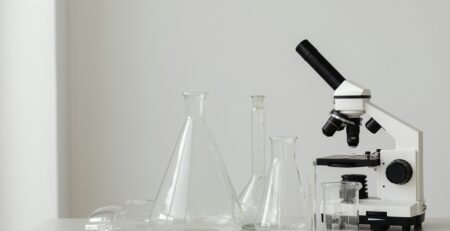29
Aug
Graduated vs Volumetric Glassware: Accuracy, Applications, and Choosing the Right Tool
In laboratory science, accuracy is everything. The choice of glassware can determine whether results are reliable, reproducible, and compliant with standards. While both graduated glassware (beakers, cylinders, burettes) and volumetric glassware (pipettes, volumetric flasks) measure liquids, they are designed for different purposes. For Australian schools, universities, and industry labs, knowing when to use graduated or volumetric equipment is essential for efficiency and safety.
Graduated Glassware: Flexible but Less Precise
Graduated glassware is marked with graduations that allow users to estimate varying volumes. Common examples include measuring cylinders, burettes, and graduated pipettes.
- Advantages: Flexible volume measurement, easy to use, cost-effective, suitable for general lab tasks.
- Limitations: Wider tolerance ranges (e.g., Class B), not intended for critical measurements.
Graduated glassware is widely used in teaching labs, reagent preparation, and experiments where approximate measurements are sufficient.
Volumetric Glassware: Fixed Accuracy for Standards
Volumetric glassware is designed for one specific volume with very high accuracy. Examples include volumetric flasks, volumetric pipettes, and Class A burettes.
- Advantages: Tighter tolerances (Class A, ISO/ASTM compliant), ideal for preparing standards and titrations.
- Limitations: Less flexible — each piece is limited to its calibrated volume.
This glassware is essential in analytical chemistry, pharmaceutical testing, and any research requiring precise solution preparation.
Case Study: QC Lab in Sydney
A pharmaceutical QC lab in Sydney compared solution preparation with measuring cylinders versus volumetric flasks. Using Class A volumetric flasks reduced variability in concentration by 20%, helping the lab meet regulatory standards and pass audits more easily. As a result, the lab adopted volumetric flasks for all standard solution preparations while continuing to use cylinders for general reagent handling.
Comparison Table: Graduated vs Volumetric Glassware
| Feature | Graduated Glassware | Volumetric Glassware |
|---|---|---|
| Examples | Measuring cylinders, burettes, beakers | Volumetric flasks, volumetric pipettes |
| Accuracy | Moderate (Class B ±0.2–0.5 mL typical) | High (Class A ±0.01–0.03 mL typical) |
| Flexibility | High (multiple volumes possible) | Low (one calibrated volume only) |
| Best For | Teaching, reagent prep, general use | Analytical chemistry, standards prep |
| Standards | ISO 4788, ISO 385 | ISO 1042, ASTM E288 |
Practical Applications in Australian Labs
- Education: Graduated cylinders for demonstrations; volumetric flasks for senior chemistry classes.
- Research: Volumetric pipettes and flasks for preparing calibration standards.
- Industry: QC and regulatory testing where Class A accuracy is mandatory.
FAQs
Q1. Which is more accurate: graduated or volumetric glassware?
Volumetric glassware is more accurate, especially Class A, designed for precise measurements.
Q2. Can graduated cylinders replace volumetric flasks?
No. Cylinders are for approximate measurement, while flasks provide exact calibrated volumes.
Q3. Are Class B volumetric flasks suitable for research?
No. Class A flasks are required in regulated or precision-based research environments.
Q4. Do standards apply to both types?
Yes. Graduated glassware is covered by ISO 4788/ISO 385, while volumetric glassware complies with ISO 1042/ASTM E288.
Q5. Does LabChoice Australia supply both?
Yes, including BORO 3.3 Class A volumetric flasks and graduated cylinders meeting ISO standards.
References
- ISO 4788: Laboratory Glassware – Graduated Cylinders
- ISO 1042: Laboratory Glassware – Volumetric Flasks
- ASTM E288: Volumetric Glassware Standards
- ACS Quantitative Chemistry Guidelines
- University of Sydney Laboratory Techniques Manual

